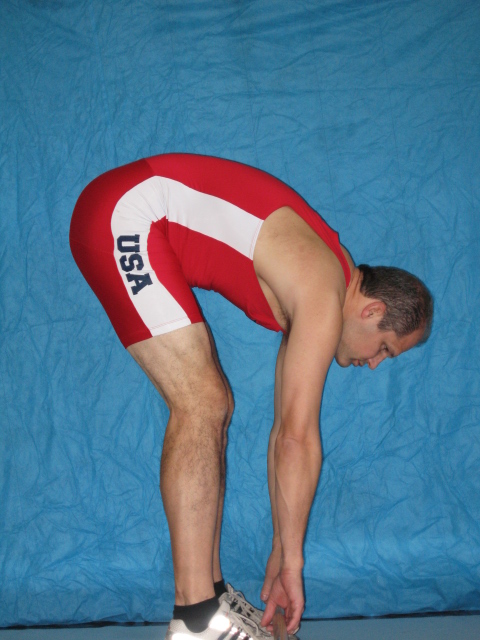Hamstrings: Stretching, Flexibility and Strength
January 20, 2009
See Below
Improving your Hamstring Flexibility
January 2, 2011
By Bob Kaehler MSPT,CSCS
Have you ever complained that your hamstrings always feel tight? No matter how much you stretch your hamstrings, they never seem to become more flexible?
Flexibility is a key factor in allowing you to get into the best body position at the catch, and in achieving a long, strong, and powerful rowing stroke. Tight hamstrings limit your ability to achieve this ideal body position. Static and dynamic stretching are two effective methods used to improve your flexibility. Long term changes to flexibility require consistent effort. The hamstrings are no exception.
Static stretching has long been used as a way to increase flexibility in muscles, and improve range of motion in joints. This type of stretching is done without movement (i.e. you remain still). The force or pressure is applied to the area being stretched by an outside force, such as a wall, strap or another person.
Studies have shown that the biggest improvements in ranges of motion occur when the end range stretch position is held for longer periods of time (10+ seconds, o r longer). The stretch position should be repeated multiple times (5-10) for greater results. For athletes looking to actually get a permanent change in their flexibility, consistency becomes a key factor. Stretching should be done every day, and if possible, several times a day for even greater results.
Recent studies also confirm that static stretching does reduce your explosive strength immediately following the stretching period (up to an hour or so). Therefore this method is best used after training sessions, not before. A simple, yet effective, method of statically stretching hamstrings involves using a door frame. Simply lie on your back next to doorway with your feet facing the opening. Slide the non-stretching leg through the doorway, then place the stretch side foot up onto the molding. Extend the knee joint of the leg being stretched so it becomes straight. You will probably need to adjust the distance of your hips from the wall to get the proper stretch tension. Ensure your tail bone does not come off the floor once you are in the appropriate stretch position.
Another approach to stretching is dynamic. Dynamic stretching is an active method where you provide the energy (i.e. you move) to produce the desired stretch. Ensure, however, that you do not exceed your normal end range for the movement otherwise it becomes a ballistic stretch. Dynamic stretches usually mimic the same sporting form that you are about to perform. To produce a good hamstring stretch, simply do a quick body-over pause (1-2 second hold), whether you are on the water or on an erg. Keep your low back in a firm upright position with the spine as straight as possible. Slumping at the low back eliminates much of the stretch on the hamstrings, so be aware of your posture. You should feel a good stretch in the back of the knees (bottom of the hamstrings) when you are in the body over pause position. If you do not you either have very good hamstring mobility or you are slumping in your low back. The point of dynamic stretching is to warm-up your body before training and racing; not to force your range of motion beyond your natural limits. Practice this form of stretching on a regular basis before adding it to your regular pre-race warm-up routine.
Dynamic stretching is ideal for warming-up muscles and joints prior to training sessions and racing. Its purpose is to prepare the tissue to properly handle the stresses of the activity. Static stretching, on the other hand, is ideal for making permanent changes (i.e. increasing) range of motion, and is best done separate from training and racing sessions.
With proper technique, combining both static and dynamic stretches into your training program is an effective way to prepare for training properly, to reduce your risk of injury, and to improve your baseline flexibility.
ARTICLE 2
Hamstrings: Stretching, Flexibility and Strength
By Bob Kaehler MSPT,CSCS
Rowers and other endurance athletes are often unsure if they have optimal flexibility in their hamstrings. Also, the question of which stretches are best, and what methods are the most effective to improve hamstring mobility? Good hamstring range of motion does allow for better rowing and running technique, while inflexibility in the hamstrings can lead to increased low and mid back stress. Below we will discuss two methods of stretching commonly used; static and ballistic techniques. Both methods are commonly used to improve musculoskeletal flexibility with endurance athletes.
The most common method used to try and improve muscle flexibility is “static” stretching. A typical static stretch is held for 10 seconds to 30 seconds once the stretch position is reached. Ballistic stretching also called “bounce” stretching, is done by bouncing in and out of the stretch position in quick succession multiple times.
Several recent studies looked at how static and/or ballistic stretching methods effected flexibility and strength. One of the studies looked at the effect of duration (hold time) of static stretching on muscle strength endurance, while the other compared flexibility and strength changes following the use of static and ballistic stretching methods.
The first study compared how the length of static stretching time effected muscle force production in the hamstring muscles. There were three groups in this study, the control group – no stretch, a 30-second hold group, and a 60-second hold group. The results of this study demonstrated that the control group and 30-second hold group had no loss in hamstring strength, while the 60-second hold group had a significant loss of strength following the stretching protocol. Strength was tested with 45 degree leg press.
The second study looked at the difference between static and ballistic stretching methods on flexibility and strength. Static holds were for 30 seconds, and were repeated several times, while the ballistic stretching was done by “bobbing’ for a 1:1 second cycles for one (1) minute. The results of the study showed that the static stretching produced a greater increase in flexibility when compared to the ballistic stretching. However strength results were significantly reduced for the static stretching group while the ballistic stretching group had no loss in strength. The conclusion of this study recommended that static stretching of 30 -seconds should not be done just prior to an athletic event or race, while ballistic stretching would be much less likely to reduce maximal strength.
Hamstring Stretching
Below are pictures of some stretching methods used to improve hamstring mobility.
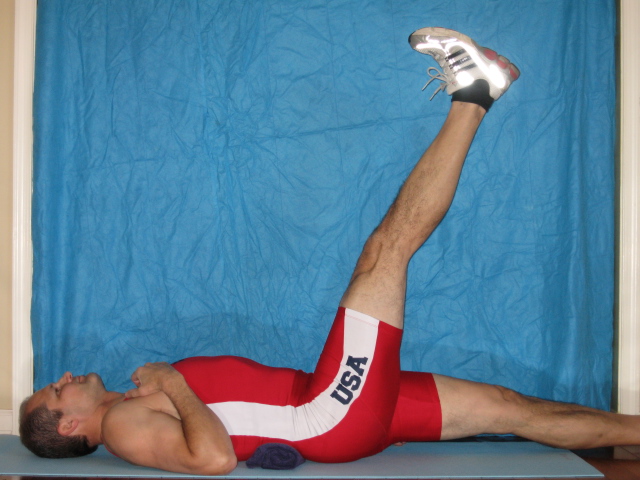
Straight leg raise position, 90 degrees (vertical) is good general range.
In order to get the body over in the rowing stroke and have the back in an ideal position one needs to have good flexibility in the hamstrings. Also, to get into a good catch position hamstring mobility is also important. Stretching the hamstrings before,during and after training can help keep this important muscle group mobile. The above picture shows a dynamic stretch to the hamstrings. Here we are using the hip flexors, abdominal muscles, and quads to stretch out the hamstrings.
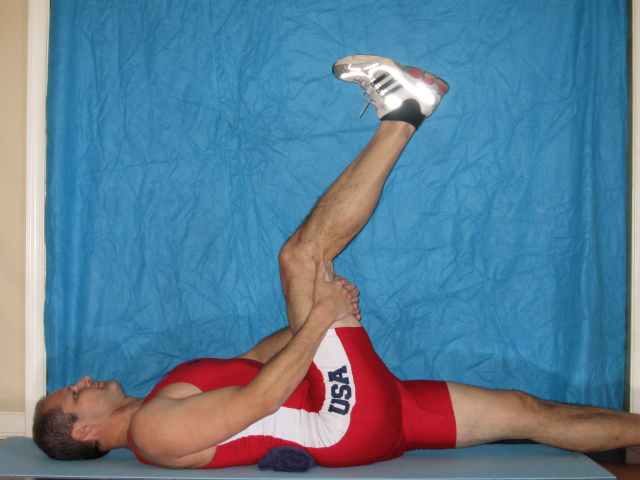
Active-static hamstring stretch
Here we use the quadriceps muscles to stretch the hamstrings. Ideal hold length is from 10 to 30 seconds. Repetitions will vary based on flexibility. Note a towel is rolled up under the low spine to eliminate low back movement when stretching the hamstrings.
Above is a typical toe touch stretch. This technique stretches both the thoracic and lumbar spine as well as the hamstrings. Those who have great spine flexibility might not get much of a stretch in the hamstrings. This method is not as effective as the straight leg dead lift position below in stretching the hamstrings.
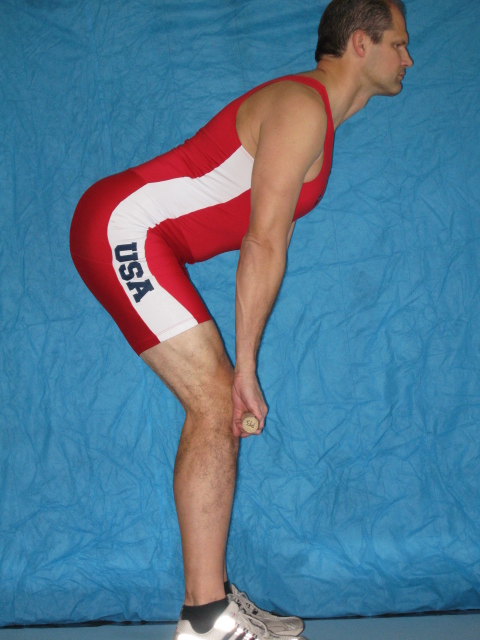
Active-static hamstring stretch
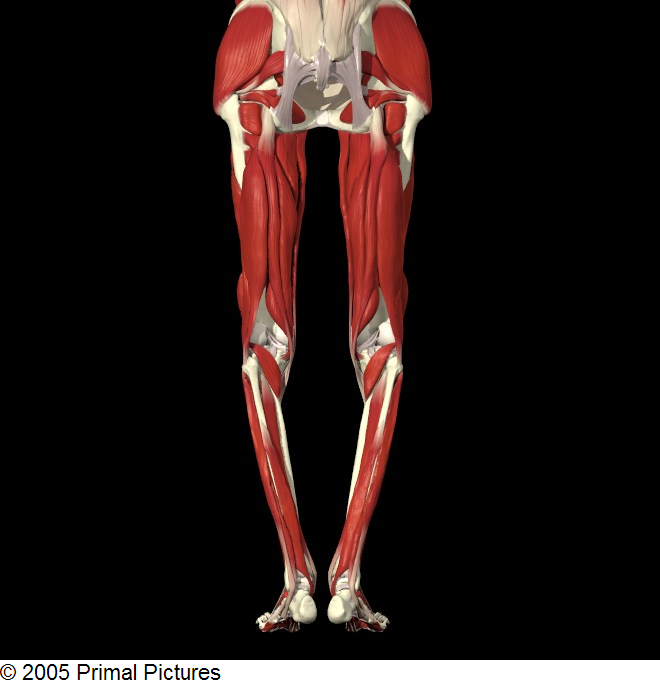
Comments
Got something to say?

